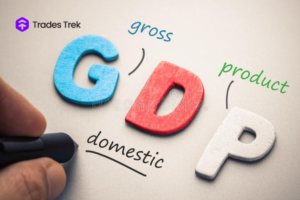Steve Jobs invested all of his resources into founding a Company named “Apple Computer.” He lost his job at the Company he founded in 1985. Instead of being dejected over losing all he had spent time and money on, he founded another Company. A few years later, the investment was also losing money, and the business was on the verge of bankruptcy due to unpaid payments and undeliverable goods. When faced with this situation, Steve could have lost it, written himself off as a failure, and hung himself in his closet. Still, he regained Apple’s control by selling the recoverable Next Computer assets to the Company. Today, he is one of the wealthiest and most successful CEOs of all time. The lessons he learned from his failures led to his success story.
Failure in the past is a great way to learn. Even the most experienced investors have occasionally made poor investment decisions. Because they chose not to allow those poor decisions to end their investment journey, they are now regarded as successful. Watching your hard-earned money vanish can be demoralizing, upsetting, and challenging. The good news is that you can recover and resume your path to more significant financial gains. You’ll learn how to get back on track and bounce back from a bad investment in this post. After all, when an investment doesn’t work out, it’s just another chance to figure out what does and doesn’t.
However, before you move into a recovery mood, take a moment to define what a lousy investment means to you. Are you talking about some stock volatility or a terrible investment? Many investors have labelled their investments as bad because they need to be able to analyze the market thoroughly.
It is hazardous when you allow your emotions to affect your judgment, consequently acting on your actions. For instance, you might have discovered when you got into your brokerage account that a stock you own has plunged 185 NGN during the day due to an earnings release. What would be your initial steps? Should you put it up for sale right now or wait and observe?
The decisions you make at this time will determine whether or not your investments are successful. Selling the stock at the smallest price increase is the wrong action. It would help if you took your time and carefully considered your options to avoid making snap conclusions. Consider the following example to have a better understanding of the detrimental effects of panic selling: toward the end of 2019, you owned shares in Fidelity Bank, and your value experienced a significant short-term decrease. The stocks decreased between October 25, 2019, and February 4, 2020, going from 225 NGN to 148 NGN. That represents a 34% decline in just three months! You lock in a loss by panicking and selling your investment at its lowest point. Imagine how devastating that would make you feel.
On the other hand, a few investors took a big breath and watched as the stocks quickly recovered by May 2020 without letting the market volatility influence their choices. Avoid selling off your stocks prematurely; what you may be labelling a poor investment may only be a temporary fall or market swing.
Suppose you conducted a thorough market analysis and concluded that the investment was unwise. For example, suppose the mutual fund underperformed expectations, or you discovered that you had better investment options. By taking an all-or-nothing stance, don’t punish yourself and let the setback result in further setbacks. You can bounce back as Steve Jobs did and still succeed. Continue reading to learn how to rebound from a bad investment.
Get back up and try again.
Getting back up might sound more accessible than it is. But that’s probably the right thing to do. You can’t just let go due to some loss, you have to try again, but this time, do extra homework, ask that additional question you should have asked, research more, and understand stock market terms and important investing principles before reinvesting.
Don’t stop investing. Try again.
Although it sounds simple, standing back up takes a lot of work. But doing that is likely the best course of action. You can’t just give up after a loss; you must try again. However, this time, before reinvesting, do more research, ask the question you know you should have asked, and understand stock market terms and essential principles of investing.
Examine your portfolio and, if necessary, make adjustments
The best action for your investment journey is to review your portfolio at least twice a year. This act will enable you to determine whether you are diversifying enough and whether you are missing the boat at some point.
You can reduce risk by distributing your money among and within various asset classes, such as stocks, bonds, and cash. It’s one of the finest strategies for enduring market fluctuations while maintaining development potential. You lower the total risk of your portfolio by owning a variety of assets with diverse performances so that no one investment may harm you.
Record Your Losses
Try to keep as much of a record of your loss as possible. If you can, note the specifics in writing. Even though it could be challenging at first, this will serve as your guide for future investments.
Gaining clarity will come from reviewing all of your actions and outlining your conclusions. You can stay clear of these problems in the future with this understanding.
It’s Time For Your Next Deal
Starting your search for a new investment might occasionally be the finest method to bounce back from poor investment and maintain motivation. If you handled things correctly back then, you gained much knowledge from your loss.
Make use of your newfound knowledge to advance. Investments carry some risk of loss, but once you’ve taken the time to educate yourself and build the necessary networks after a setback, you’re probably ready to start reinvesting.
To Sum Up
It’s never pleasant to lose money on a subpar investment, but you can bounce back. Your mistakes can help you develop and learn. Additionally, you should find comfort in knowing that even the most successful investors have losses.
Spend time emotionally healing, but don’t let that stop you from reinvesting. You will be successful in the future as long as you use your losses to adopt a more strategic approach to investing.
Another good reason to take a long-term approach is to invest in the stock market’s short-term uncertainty. And always remember, The more your portfolio is diversified, the less damage one poor investment may do.




